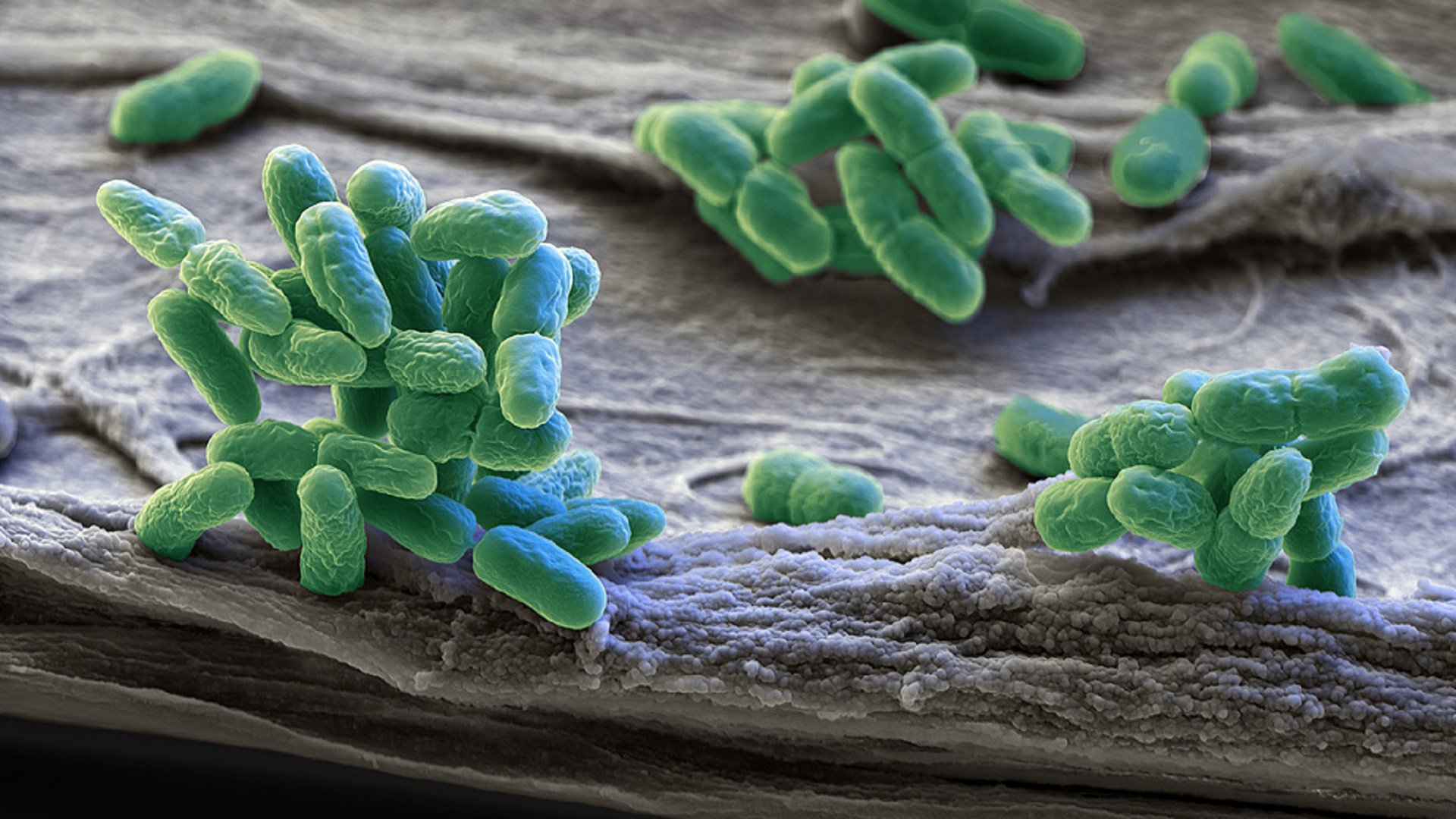Synechocystis sp. PCC6803 is an important cyanobacterium (or blue-green alga) in biotechnology. This microbe is able to make all kinds of useful substances in a sustainable way, such as medicines, bioplastic, biofuel, sweeteners and perfume.
Synechocystis sp. PCC6803 is an important cyanobacterium (or blue-green alga) in biotechnology. This microbe is able to make all kinds of useful substances in a sustainable way, such as medicines, bioplastic, biofuel, sweeteners and perfume.
Sustainable supplier
Many harmful substances and greenhouse gases are released when making our daily products. So it is time to start producing more sustainably, and that is only possible with microbes. One such microbe is the cyanobacterium Synechocystis sp. PCC6803. This blue-green alga is widely used in biotechnology to produce all kinds of useful substances. And it does that much more sustainably than many other microbes. This is because it only uses sunlight and CO2 for this (photosynthesis). This is called phototrophic. Other commonly used microbes are heterotrophic, so they must be "fed" with sugars. Also, Synechocystis sp. PCC6803 grows in fresh water at room temperature, while many other species require specific (and often energy-guzzling) growing conditions. This makes them much less sustainable.
Useful substances
Cyanobacteria (blue-green algae) play profound roles in ecology and biogeochemistry because of their essential role as oxygen producers. This makes them very interesting for use in biotechnology. The most widely used cyanobacterium is the unicellular Synechocystis sp. PCC6803 since it’s highly amenable to genetic modification. Researchers have put significant efforts into understanding this blue-green alga. This way, they hope to find new ways to have this bacterium produce chemicals and biofuels from sunlight and CO2.
Synechocystis sp. PCC6803 has been used, for instance, to make several biofuels, such as ethanol, isobutanol, fatty acids, and fatty alcohols. Besides that, this blue-green alga produces chemicals that can be used in perfumes, medicines and sweeteners. Like acetone, the well-known solvent, or salicylic acid, used in aspirin. It can also be cultivated to make ethylene and isoprene, which are used in the production of synthetic rubbers, and the biopolymer polyhydroxyalkanoate (PHA) which can be used to produce bioplastics.

